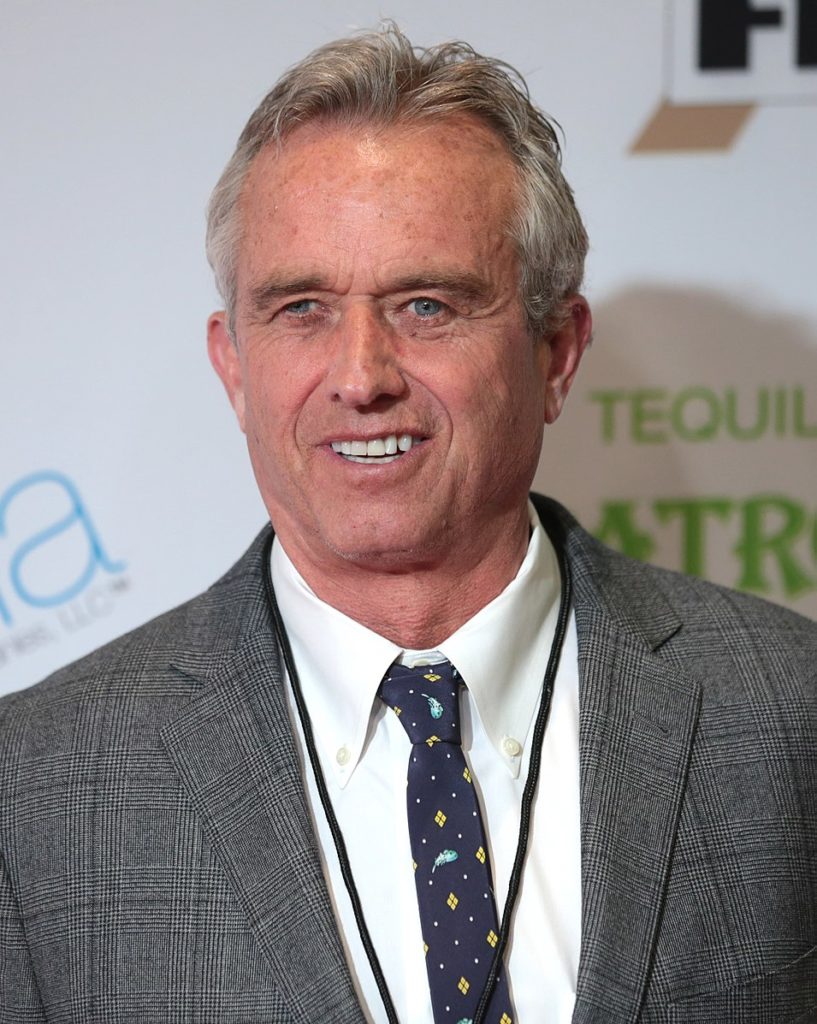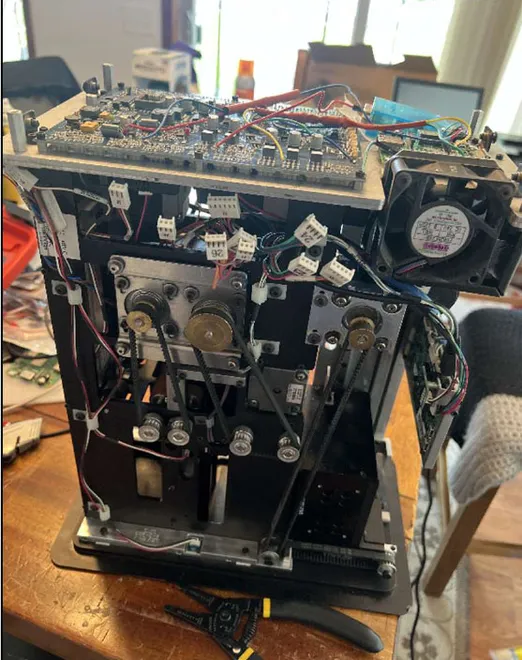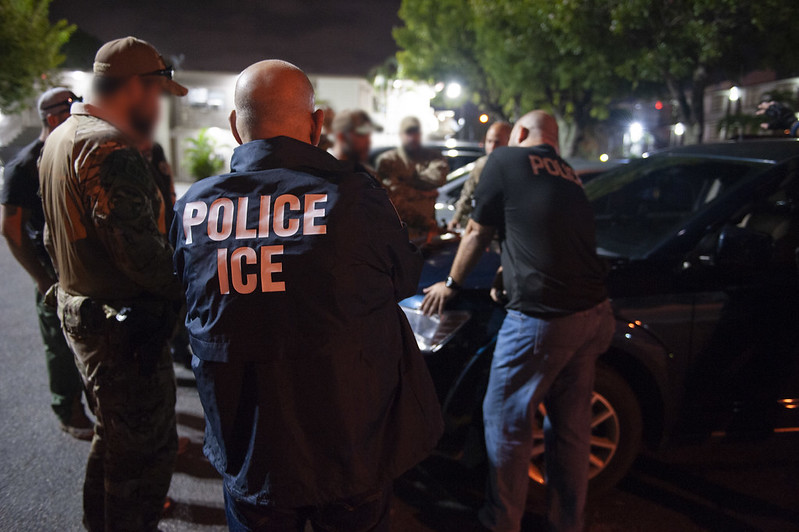The author, a resident of Durham, England, published the book “The Forgotten Terrorist: Sirhan Sirhan” in 2008. The second edition came out in 2019. He has written articles in a number of publications including Crime Magazine, the Los Angeles Times and TIME magazine. In 2011, Sirhan Sirhan sought a new trial or freedom. In December 2011 California’s Deputy Attorney General Jamie Fuster requested Ayton’s assistance in preparing a brief challenging Sirhan’s claim that he was innocent of the murder of Senator Robert F. Kennedy
By Mel Ayton
In August this year Robert F. Kennedy’s assassin, Sirhan Sirhan, will once again attempt to persuade the California Parole Board he has no memory of the assassination and was likely a hypnotised killer who was programmed to forget. His lawyers will once again promote the notion that another assassin, named by conspiracy theorists as Ambassador Hotel security guard Thane Eugene Cesar, was the conspirator who fired the fatal shot to RFK’s head. Supporting Sirhan’s efforts to persuade the board that he is innocent of the crime is the victim’s son, Robert F. Kennedy Jr.
In 2017 RFK Jr visited his father’s assassin at the Robert J. Donovan Correctional Institution in San Diego, California. He was accompanied by Sirhan’s attorney, Laurie Dusak. After the meeting Kennedy hugged Sirhan and told him he knew he had not killed his father, and that he was “as much a victim as his father”, adding, “(Sirhan’s) a sweet man”.
RFK Jr’s characterisation of Sirhan as a ‘sweet man’ seriously contradicts the statements the assassin made over the years about his victim including: “I saw that bastard (RFK) as a mass murderer. He was to the Arabs what Hitler was to the Jews.” (1968); “…a f…… politician, who would have been a killer if he had been elected, he would have sent those f…… jets, I don’t think I should be convicted at all.” (December 1968); “The bastard isn’t worth the bullets.” (1969); “That bastard is not worth my life.” (January 1969); “Kennedy got what was coming to him.” (March 1969) During his trial the assassin told his defence investigator, Michael McCowan, he didn’t shoot RFK between the eyes because, “…(RFK) turned his head at the last second.”
In 2018 RFK Jr told Washington Post journalist Tom Jackman he had spent months of research into the assassination, including speaking with witnesses and reading the autopsy and police reports. Unconstrained by the inconvenient but true facts of the assassination, Kennedy Jr concluded:
- His father was shot four times at point-blank range from behind, including the fatal shot behind his ear. But Sirhan, a 24-year-old Palestinian immigrant, was standing in front of him. RFK Jr. said that nobody saw Sirhan get close enough to his father to fire at point blank range. “It’s not only that nobody saw that,” Kennedy said. “The people that were closest to [Sirhan], the people that disarmed him all said he never got near my father.”
- “There were too many bullets,” Robert Kennedy Jr. said. “You can’t fire 13 shots out of an eight-shot gun.”
- RFK Jr also said that, “…the case never went to a full trial because that would have compelled the press and prosecutors to focus on the glaring discrepancies in the narrative that Sirhan fired the shots that killed my father.”
Pertinent Facts
Philosophers reason that any belief can be argued if enough assumptions are present and pertinent facts are forgotten. Such is the case with regard to RFK Jr’s claims.
- Old canards about the RFK assassination were put to rest years ago, Alas, they are still promoted by many media outlets. The idea that Sirhan had been a hypnotised assassin was rejected by the American Psychological Association. The ‘mysterious’ Polka Dot Woman story was rendered false years ago after the discovery of LAPD witness statements by this author that were given to the authorities by Geraldine Agnes McCarthy and her family.
- Many of the 12 eyewitnesses who were close to RFK when he was shot stated that Sirhan was anywhere from 3 to 12 feet away from RFK. However, investigative journalist Dan Moldea established the majority of the 12 witnesses gave estimates of muzzle distance based only on the first shot and did not see Sirhan lunging at the Senator. RFK assassination witness Vincent DiPierro has stated many times over the past five decades that Sirhan was able to reach Kennedy’s head with his gun and his account has been corroborated by witnesses Frank Burns and RFK friend, Freddy Plimpton. As recently as 2018 DiPierro stated, “I saw the gun come from the right side of my eye and [Sirhan’s arm] was outstretched. We always talk about the upward trajectory . . . well, Sirhan was shorter than Robert and he was also stretched out so that his arm was an extended version going in an upward trajectory . . . There was nobody between Robert, Sirhan, and me . . . The first shot was directly to his head . . . I got sprayed with the bullet to his head . . . There was a pause because Robert’s hands went up to his head . . . the third bullet hit the top of his jacket . . . and the fourth shot went through my shirt . . .. I didn’t get hit . . . A lot of people said there were more than eight shots. Well, there was a lot of popping, a lot of banging. I only saw seven shots come out of the gun. There were eight.”
- Ear-witness testimony had never established a scenario in which 13 shots had been possible. Of the 77 witnesses in the pantry only a handful said they thought they heard more than eight shots. Around 30 or so said they heard 8 shots or less. Most pantry witnesses described the shooting as a, ‘number of shots,’ ‘series of firecrackers,’ ‘several shots’ or ‘a number of shots in rapid succession.’
Acoustics experts Dr. Philip Harrison and Dr. Peter French, based in York, England, examined the audio tape of the shooting (The ‘Pruszynski Tape’) and concluded no more than eight shots had been fired. In recent years, Harrison’s and French’s research has been confirmed by another acoustics expert with 35 years’ experience, Ed Primeau. Primeau used sophisticated computer software, iZotope RX, which has only become available in the last few years and is used by the FBI. He analysed the Pruszynski recording and concluded eight shots had been fired.
Most egregious of Robert Kennedy Jr’s claims is his allegation that Thane Eugene Cesar, who had accompanied Senator Kennedy through the Los Angeles Ambassador Hotel pantry, killed his father. He made the allegations within days after Cesar died in 2019, clearly aware that you cannot libel deceased persons. “Cesar waited in the pantry as my father spoke in the ballroom” RFK Jr said, “then grabbed my father by the elbow and guided him toward Sirhan”. RFK Jr also claimed that it was Cesar who fired the fatal shot.
Entirely Illogical
RFK’s accusations about Thane Eugene Cesar are entirely illogical. In order to shoot Robert Kennedy Cesar would have had to put his gun very close to Kennedy’s head at the same time Sirhan was firing rapidly in his direction and he would have run a considerable risk of being shot. The Cesar-as-second-gunman theory is thus rendered highly improbable.
There is an additional, and ridiculous, component to the conspiracy advocates’ attempts to link Cesar to the shooting. Cesar had been carrying a .38 pistol that night which was checked by his supervisor. But, like Sirhan, he did own a .22 pistol which he sold three months after the assassination. It begs the question – why would a murderer, under threat of execution if caught, hold on to a purported murder weapon for three months before he got rid of it when he could have simply thrown it in a river?
Investigative journalist and author Dan Moldea researched Cesar’s background over many years and concluded that the security guard had been wrongly accused. As part of his investigation Moldea arranged for Edward Gelb, a former president and executive director of the American Polygraph Association, who had over thirty years’ experience in the field, to give Cesar a polygraph test. He concluded Cesar was telling the truth. Moldea’s book became the definitive work on the assassination and was highly praised by the New York Times and numerous other media.
The true facts about the assassination and the debunking of the numerous conspiracy allegations that followed are important. RFK Jr’s support for his father’s assassin has made him a standard-bearer for a type of credulous thinking which is quickly spreading through society like a virus, mutating into unexpected variants. As Michael Sherman, the founder of Skeptic magazine said, “As a culture, we seem to have trouble distinguishing…history from pseudohistory, and sense from nonsense.”
RFK Jr has been heavily influenced by former union organizer Paul Schrade, one of the victims in the shooting, and conspiracy writer Lisa Pease. Schrade is convinced of Sirhan’s ‘innocence’ but he has, either willfully or otherwise, ignored the wealth of evidence to the contrary. Pease believes that the CIA was responsible for the JFK, Malcolm X, Martin Luther King, Jr. assassinations prior to knocking off RFK—and for good measure, was probably guilty of the attempted assassination of George Wallace and John Lennon’s murder 12 years later. She also believes the US government is not telling the truth about the 9/11 terrorist attacks.
And, because of his Kennedy name and celebrity status, RFK Jr’s views could well influence the California Parole Board when it meets in August to consider whether or not to release the convicted killer. Kennedy has offered testify on Sirhan’s behalf.
Additionally, a new directive by Los Angeles County District Attorney George Gascón says that Los Angeles prosecutors will no longer be allowed to attend parole hearings. Under the new directive, no one from the Los Angeles District Attorney’s office will be allowed to attend Sirhan’s parole hearing to advocate for the victims in the case and argue against the assassin’s release.
If Sirhan continues to deny he had any memory of his appalling crime and repeats his assertions he may have been ‘hypnotised and programmed to forget’ – and this time winning acceptance by the Parole Board – it would signal a great victory for pseudohistory and a great defeat for common sense.
Two people who spoke with Sirhan over the years should be considered by the California State Parole Board before it delivers its judgment. Their accounts of their meetings with the convicted assassin have often been overlooked or dismissed out of hand over the past five decades yet what they have to say is extremely pertinent to the board’s decision.
In 1978 a British journalist had a ‘terrifying’ experience when he interviewed Sirhan in Soledad Prison. According to Paul Callan, who interviewed Sirhan in his cell 10 years after the assassination, the assassin “…coiled his fingers around an imaginary .22 calibre revolver – and aimed it at my head. It was terrifying…. I have never doubted that he was the man who took the senator’s life.”
Sirhan told Callan, “I have a hazy memory of that day…I am deeply remorseful at having killed another human being. I have a deep hatred, in principle, of killing anyone…(but) I was not regretful about killing a man who was threatening me, my life, my country, my Palestine, my beloved homeland…What I did was a political act. I was the instrument…Some of that time was hazy. But I remember I was greatly agitated and in a highly nervous condition…Then I read in the Los Angeles Times that a Zionist organisation (Callan said Sirhan, “spat out the word ‘Zionist’”) was planning to hold a victory march in the vicinity of the hotel where Kennedy was speaking. It was that march that compelled me to go down – my lovely Palestine was emotionally in my heart. Like most Arabs, I do not drink alcohol, so my body was not used to it. I remember returning unsteadily to my car to rest. I had to get my mind straight. I also had to go and get the gun because I was afraid the Jews would steal it.”
Carmen Falzone was a friend of Sirhan’s when the assassin spent part of his prison time in PHU 1 at California’s Soledad prison. “I asked Sirhan”, Falzone said, “If you were angry because the U.S. supported Israel, why didn’t you kill the president, kill LBJ? He started to tremble, those dark eyes popping, and he said, ‘Don’t you understand, I did kill the president. Kennedy would have been president. And if he was that pro-Israel when he wasn’t president, imagine how he would be as president. So, I decided to change history.’”
Falzone added, “Sirhan is saner than you or me. He told me he made up all that trance and hypnosis stuff . . . He told me the love for the Kennedys was declining, so now he wanted to make himself look more sympathetic in the media . . . I found out Sirhan was highly intelligent, one-directional, emotionless, and suspicious, the perfect terrorist”.
During the 2016 Parole Board hearing a commissioner quoted another statement Falzone had made, this time to the Los Angeles District Attorney, “When he re-enacted the shooting, he actually raised his hand and everything.” Falzone said, “He had a perfect memory, absolutely perfect at the time he was in the (Ambassador Hotel) kitchen, at the time of the shooting, during the shooting. He told me that hypnosis or that mind blank thing that he claimed was just a game and that he was never hypnotised”. When Falzone’s account was read out to Sirhan at the hearing Sirhan could only bluster and accuse Falzone of being a, “…paid informant for the District Attorney”.
Additionally, the Parole Board should consider the 1969 notes Sirhan wrote in his own hand for trial defense investigator Michael McCowan. Sirhan shows clearly and indisputably he has been lying for decades about his purported amnesia. The historically significant document shows that Sirhan’s detailed description of his day at the Ambassador Hotel contradicts the defense team’s argument that the assassination was an impulsive act of a mentally disturbed man who suffered from amnesia or was hypnotized and thus would be unable to recall what happened. He recounts the various people that he encounters on a hand-drawn intricate floor plan of the Ambassador Hotel’s ballroom placing numbers on various rooms on the map, which refer to footnotes on the ensuing three pages, describing what he sees as he heads towards the Ambassador kitchen pantry to shoot Kennedy.
PHOTO: Sirhan’s plan of the Ambassador Hotel









